

10 TALENTS: Tradition & Innovation in Textile Design
Textiles, one of humanity’s oldest art forms and functional crafts, have been integral and formative to civilizations since ancient times. From the humble beginnings of hand-spun threads and primitive looms to the complex machinery of the Industrial Revolution, the evolution and commerce of textile design has profoundly shaped the way societies have developed. Thus, it is distinctly fascinating to witness traditional textile techniques being maintained, passed down through generations, and valued for their cultural inheritance, a continuity not often found in other artistic disciplines.
Originally driven by necessity and passed down for survival, these skills now demand active preservation as an art form in the modern age, where practicality often yields to artistic expression. Yet, practicality must remain essential, as textiles continue to evolve, mirroring societal changes and technological advancements. Our featured 10 TALENTS take pride in continuing this legacy while also pushing boundaries and embracing new technologies, ensuring that textile design remains as mutable and influential as ever.
Furthermore, amidst increasing consumer demand for transparency and sustainability, these designers also place a high value on slow practices and eco-friendly methods. They are committed to promoting ethical practices that reduce the environmental impact of textile production. In an industry often criticized for its ecological footprint, these 10 TALENTS demonstrate that innovation and tradition can coexist beautifully and consciously.
By blending sustainable practices with modern techniques, they pave the way for a future where textile design is both an art form and a means of positive change. Their works, spanning from throws and cushions to rugs and wall decoration, embody the enduring power and evolving potential of textile design, harmonizing the tactile richness of traditional craftsmanship with the limitless possibilities of contemporary technology and the historical depth of the art form.
Tartaruga Studio ( Łódź, Poland)
Tartaruga Studio, founded by Jadzia Lenart and Wiktoria Podolec in Łódź, Poland, stands out for its heartfelt and personal approach to textile design. Drawing inspiration from their immediate surroundings, the duo infuses their kilims with elements of nature, daily life, and personal rituals. This intimate connection to their environment translates into unique patterns and symbols that reflect their memories and emotions. Consequently, each piece becomes a deeply personal expression, or as they describe it, “a mosaic of memories etched in the mind… a kind of postcard or personal souvenir from a trip”.
Tartaruga demonstrates a strong commitment to sustainability through their choice of materials: recycled wool yarns and hand-dyed natural wool. Utilizing recycled wool from industrial carpet weaving leftovers ensures durability and promotes a second life for materials, while their plant-dyed yarns, crafted from kitchen waste and local flora, imbue their works with a unique, inimitable quality. As a result, this eco-friendly approach minimizes waste, with only 2 grams of biodegradable waste produced per square meter of kilim.
Tartaruga Studio’s innovative spirit shines through in their exploration of traditional techniques. They emphasize the importance of returning to handcrafted methods while also pushing boundaries and experimenting with new forms. Currently, they are exploring three-dimensional structures that challenge the conventional flatness of kilims, thus expanding the possibilities of this ancient craft. Named after the Italian word for turtle, Tartaruga symbolizes nobility, deliberate pace, and enduring longevity—an apt reflection of Tartaruga Studio’s ethos. Here, memory is as integral as wool and loom, where the synthesis of personal memories and traditional techniques uniquely preserves and conveys the stories and experiences of their creators.
Ebba Lindgren (Malmö, Sweden)
Ebba Lindgren, based in Malmö, Sweden, bridges the worlds of industrial design and art with a keen focus on shape and texture. Her innovative collections, exemplify her penchant for reimagining historical aesthetics through eco-friendly practices.
Ebba Lindgren’s groundbreaking approach makes use of Kvadrat’s “Really Board,” a versatile textile fiberboard akin to MDF, renowned for its precision CNC-cutting capabilities and showcased in her celebrated Really Rococo project. “Really Board” ingeniously repurposes textile industry off-cuts, materials from industrial laundries, and worn-out hotel bed linens. These components are milled and pressed with a textile binder, giving them a second life and ensuring sustainability in Lindgren’s innovative designs. Her work boldly illustrates how textiles can expand beyond traditional forms like blankets or tapestries, highlighting their potential in pioneering and unconventional applications.
Lindgren’s commitment to sustainability permeates every aspect of her work. Beyond creating individual pieces, she actively collaborates on initiatives like Fiber Land, which promotes sustainable wool, flax, and hemp production in Sweden. Her dedication to merging textile design with broader design practices underscores her progressive role in crafting functional art that resonates with both historical allure and contemporary eco-awareness.
Keep an eye out for Ebba’s exciting new textile project launching this July!














Lyk Carpet (Berlin, Germany)
At Lyk Carpet, Lienau specializes in designing bespoke knotted objects and unique rugs that blend avant-garde innovation with traditional craftsmanship. Each piece is thoughtfully tailored to harmonize with its intended space, a collaborative journey she embarks on with her clients. Whether the object should be a bold statement or a subtle accent, Lienau explores the interplay of structure, texture, composition, and color within a room, aiming to evoke emotions, create contrasts, or integrate with architectural elements.
Central to Lienau’s ethos is the ethical and sustainable production of her designs. Since founding Lyk Carpet, she has partnered with fair trade organizations to ensure that her rugs are crafted under socially responsible and environmentally friendly conditions. In Nepal, she collaborates with a traditional workshop that exclusively uses Tibetan highland wool, processed by hand from live sheep and dyed with botanicals like bark, roots, flowers, indigo, and fruit peels. This careful process, from combing and spinning the wool to hand-knotting the rugs, ensures the highest quality while respecting people, animals, and nature.
Beyond their aesthetic appeal, Lienau’s creations embody a narrative and value chain rooted in fair-trade principles. Each piece invites viewers and users to engage with craftsmanship on a sensory and emotional level, fostering a deep appreciation for the manufacturing quality and ethical integrity behind the objects. For Lienau, this interconnectedness extends beyond individual spaces, emphasizing the shared responsibility for our world and underscoring the potential of art and design to reconnect with their intrinsic, substantive roots.
Lucas Gutierrez Studio (Berlin, Germany)
Lucas Gutierrez Studio, based in Berlin, spearheads a visionary fusion of traditional craftsmanship and avant-garde digital design, as exemplified in their striking tapestries. The tapestries showcase a spectrum of colors, ranging from neon hues to muted pale shades, evoking lush landscapes with delicate accents adding depth and intrigue. Each piece is intricately machine-woven, yet imbued with handcrafted details that enhance its uniqueness, reflecting Gutierrez’s commitment to crafting pieces that bridge the gap between past and present.
Inspired by themes of infinity and transformation from digital worlds, Gutierrez’s tapestries narrate stories of digital culture through the lens of high-quality design. They embody a modern interpretation of ancient craftsmanship, celebrating luminosity, form, and vibrant aesthetics. Using jacquard weaving, a technique that has always been at the forefront of textile technology, Gutierrez’s works achieve an immersive, almost hypnotic quality. Remarkably, Gutierrez manages to create a 3D effect within these 2D tapestries. While absorbing these pieces, viewers are drawn into them, feeling as though they could practically fall into the artwork—a portal into another world.
Developed and assembled in Berlin and woven in Italy, these limited edition pieces resonate with ethereal beauty, offering a tangible manifestation of intangible concepts. Looking ahead, Gutierrez dreams of advancing into 3D weaving, further pushing the boundaries of textile artistry and digital sculpture within his studio’s innovative practice.
Maria Sigma (London, United Kingdom)
Maria Sigma, founded by Maria Stavropoulou, epitomizes a blend of Greek heritage and a profound dedication to craftsmanship in contemporary textiles. Her studio is distinguished by a minimalist aesthetic infused with warm, neutral yet vibrant colors, reflecting an exploration of architecture, natural landscapes, and traditional weaving techniques. Maria’s approach challenges conventional norms by deconstructing and redefining traditional methods, deliberately eschewing the pursuit of perfect symmetry in favor of more authentic creative exploration.
Central to Maria Sigma’s approach is a dedication to sustainability and zero-waste design. Maria emphasizes the use of high-quality, sustainable natural fibers, preferring undyed and hand-spun yarns to minimize environmental impact. Her textiles are carefully crafted through slow-making processes, ensuring longevity and minimizing resource consumption. Wool, cherished for its versatility and eco-friendly qualities, holds a special place in Maria’s designs, transforming into dynamic textures depending on weaving patterns and finishing techniques.
Maria Sigma, beyond its commitment to sustainability, champions the cultural significance of textiles by integrating ancient techniques with modern innovation. Stavropoulou passionately advocates for weaving’s pivotal role, as fabrics permeate every facet of daily life, bridging connections between humanity, nature, and personal identity. Her creations not only exemplify timeless craftsmanship but also narrate stories through their distinctive textures and materials, envisioning a future where textiles become sustainable, artistic expressions of cultural heritage and environmental responsibility.
BOI (Berlin, Germany)
BOI, led by founder and designer Goran Sidjimovski in Berlin, is renowned for its pioneering approach to sustainable knitted textiles. Embracing a hands-on methodology rooted in trial and error, BOI challenges conventional perceptions by directly experimenting with a variety of materials and techniques on knitting machines. Each textile surface evolves organically, guided by its unique optical and tactile qualities, shaping its ultimate form and function.
The studio unveils an annual collection that serves as a thematic exploration. Their latest collection, for instance, delves deeply into the theme of social integration. The textiles produced under this theme reject traditional patterns, intentionally disrupt commonality, and explore unconventional paths to develop into distinctive forms. Throughout this creative process, sustainability remains a guiding principle. BOI employs the ‘Fully Fashion’ knitting method, which shapes each panel directly, resulting in less than 1% material waste. Moreover, waste materials are repurposed as filling for seat cushions, demonstrating a commitment to circular design practices.
In addition to environmental sustainability, BOI is dedicated to social impact. They collaborate with NGOs such as HOPS in North Macedonia, where hand stitching for selected products is undertaken as part of a social project. This initiative empowers marginalized communities, providing them with valuable skills and fair compensation for their work.
BOI thrives at the intersection of cutting-edge knit technology and thoughtful design. Beyond creating their own collections, they actively share their expertise through collaborations with fashion and interior designers, further amplifying their influence in the textile industry. By pioneering new possibilities in knitted textiles and fostering meaningful social and environmental practices, BOI exemplifies a commitment to innovation, sustainability, and inclusive design leadership.
Twelve Degrees (Amman, Jordan)
Twelve Degrees, a multidisciplinary team of designers and engineers based in Amman, Jordan, introduces the Made From Jordan rug as a testament to their innovative approach to product design. Faced with challenges in local material sourcing, they turned to palm waste, an abundant agricultural resource in Jordan, as the primary material for the Made From Jordan rug. This sustainable initiative not only addresses economic constraints but also promotes local resource utilization.
Comprising 91 carefully crafted pieces, each formed from blended and molded agricultural waste infused with indigo dye, the Made From Jordan rug exemplifies thoughtful craftsmanship from inception to completion. Hand-stitched and designed for exceptional sound-absorbing qualities, it stands as a striking display piece. Beyond its aesthetic and functional appeal, the rug represents Twelve Degrees’ commitment to sustainable design practices, showcasing how creativity and resourcefulness can transform agricultural by-products into innovative, environmentally-friendly products.
Laura Dominici (Vienna, Austria)
Laura Dominici, based in Vienna, follows a multifaceted approach as an object designer, with a notable textile design, the Magic Tapestry. This innovative piece serves as a portable, personal workspace that unfolds into a cozy environment with a domestic ambiance, ideal for digital nomads in today’s remote work era. Beyond its functional role as a workspace, the Magic Tapestry transitions to its more conventional use as a decorative wall tapestry, embodying both utility and aesthetic appeal.
The Magic Tapestry integrates a soft, handwoven carpet with a practical table for a laptop, offering a minimalist yet functional workspace designed for modern digital nomads. Hand-woven from local sheep wool sourced from Haslach, Austria, and complemented with anodized aluminum, each tapestry prominently displays the dates marking the duration of its intricate weaving process. This detail highlights the deliberate, time-intensive craftsmanship often overlooked in a fast-fashion world, juxtaposing it with contemporary ideals of productivity. In this fast-paced era of remote work, offering both flexibility and the expectation of constant availability, it serves as a poignant reminder to embrace moments of intentional living and mindful reflection whenever they can be seized.
Laura draws inspiration from the historical significance of tapestries, which were once essential household items for traveling kingdoms, serving as both thermal insulation and decorative symbols of home. She envisions the Magic Tapestry as companions for contemporary wanderers—individuals working on laptops, moving between locations like modern-day kings managing their businesses.
Through her exploration of unconventional materials and dedication to intricate weaving techniques, Laura Dominici invites interaction with her designs, encouraging individuals to connect with the essence of place and purpose woven into each tapestry. Her vision beautifully blends historical resonance with modern practicality, redefining the concept of workspace and comfort in a nomadic world.
Ishraq Zraikat (Wallkill, Jordan)
Ishraq Zraikat, based in Wallkill, Jordan, draws profound inspiration from cultural heritage and historical craftsmanship. She is captivated by the evolution of crafts, tools, and techniques, which she believes reflect the ingenuity and innovation of people throughout history. This appreciation for the past is complemented by her willingness to embrace forward-thinking technologies, creating a dynamic blend in her work. As a hand weaver who also delves into industrial weaving, Ishraq’s versatility shines through in her creations.
With an approach to design rooted in a commitment to learning and discovery, her collection of woven jacquard throws marks a significant exploration into computerized jacquard looms, a departure from her usual hand weaving. The patterns for these throws are derived from her extensive archive of vintage fabrics collected over many years from various countries. She enjoys reinventing these patterns, transforming them through different techniques like weaving and knitting to observe the variations. Although she predominantly works with natural fibers such as wool, she chose cotton for her jacquard throws to achieve textiles that are easy to care for and maintain.
Ishraq envisions a future with more informed consumers who prioritize quality over quantity, favoring products made with natural or less toxic materials and produced through slower, more traditional methods. This aligns perfectly with her design philosophy, which emphasizes the importance of being intimately involved in the production process. She values the personal connection to her work and the sense of control and ownership that comes from being close to each step of creation.
Susanna Costantini (Silvi Marina, Italy)
Susanna Costantini Atelier in Silvi Marina, Italy, celebrates the interaction between hands and materials, crafting each creation through an exclusive and unique process. Beginning with the observation of natural patterns, Susanna explores the synergy between different yarns and materials.
Costantini’s handcrafted weavings on a traditional 4-shaft loom use diverse techniques and materials, including selected, recycled, or handcrafted yarns, often with manual spinning and natural dyeing, creating distinctive qualities and charming irregularities. Recently, Costantini introduced her Gleaning Series, featuring minimalist textile panels inspired by the traditional practice of collecting leftover crops after harvest (gleaning). For Susanna, gleaning symbolizes the recovery of both material and emotional value, guiding her decisions on whether to let go, recover, or process remnants.
This approach reflects Susanna’s deep respect for the longevity, and heritage of textiles. Reflecting on her great-grandmother’s legacy, Susanna shares, “My great-grandmother was a weaver who cultivated and spun linen threads, dressed the loom, and wove fabrics for everyday use. I still have worn-out rags and incredibly fresh linen sheets over 100 years old… These antique fabrics continue to impart wisdom through their tactile history.
In her work, Susanna Costantini bridges the past and present, embodying a profound respect for traditional craftsmanship while exploring new avenues in textile artistry. As she contemplates the future of textile design, Susanna challenges us to consider what we leave behind and what we bring into the future of this enduring industry.
Final Thoughts: Past, Present & Future of Textile Design
Textiles, integral to human history and culture, have evolved from essential practicality to profound artistic expression. While still retaining practical uses, textiles carry a unique and enduring history, rooted in necessity unlike other fine art forms such as sculpture or oil painting. Our 10 TALENTS exemplify this evolution, weaving narratives of heritage and craftsmanship into each creation while embracing innovation and sustainability.
As Maria Stavropoulou eloquently states, “fabrics reside in the everyday and create a sense of something familiar and beloved,” reminding us of textiles‘ intimate role in our lives. Through this intimate connection, these designers navigate the complexities of modernity, deftly balancing artistic expression with ethical responsibility.
With an innovative spirit and dedication to craftsmanship, our 10 TALENTS continue to redefine the boundaries of textile design. They enrich our lives with warmth, comfort, and a profound connection to both history and the future, ensuring that textiles remain a vibrant testament to human creativity and ingenuity.
Explore ADORNO’s Collection of Contemporary Textile Design
-

 Plush Pillowcase€85 incl. tax
Plush Pillowcase€85 incl. tax -

 Lola – Textile Chandelier€2.813
Lola – Textile Chandelier€2.813 -

 Spigolatura N°61 – Handwoven Wall Art€2.250 incl. tax
Spigolatura N°61 – Handwoven Wall Art€2.250 incl. tax -

 “Rose Realm” Handcrafted Rug€4.625 incl. tax
“Rose Realm” Handcrafted Rug€4.625 incl. tax -

 Arren – Woven Wool Rug€1.350 incl. tax
Arren – Woven Wool Rug€1.350 incl. tax -

 “Juno” Rug€9.050 incl. tax
“Juno” Rug€9.050 incl. tax -

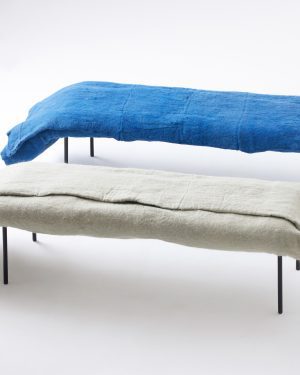 Carpet Bench – Felt / Steel€2.125 incl. tax
Carpet Bench – Felt / Steel€2.125 incl. tax -

 Dank Pouf€4.070
Dank Pouf€4.070 -

 “Mylla” Rug€7.000 incl. tax
“Mylla” Rug€7.000 incl. tax -

 Cut-Out Rug Sprinkles€2.250 – €2.425 incl. tax
Cut-Out Rug Sprinkles€2.250 – €2.425 incl. tax -

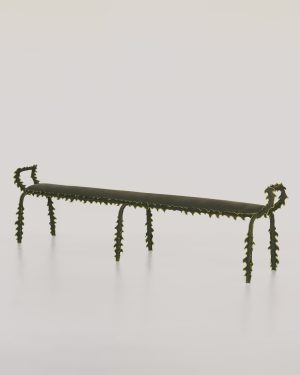 Disguise Series 00 – Armrest Bench 5 Seater€4.000 incl. tax
Disguise Series 00 – Armrest Bench 5 Seater€4.000 incl. tax -

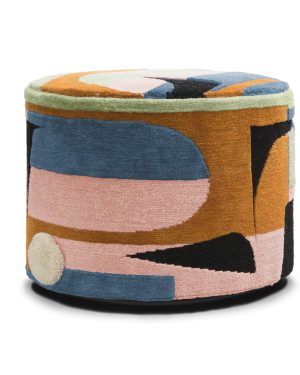 Hilma Pouf – Tibetan Wool / Wooden Base€3.256 incl. tax
Hilma Pouf – Tibetan Wool / Wooden Base€3.256 incl. tax -

 “Boucle” Rug€8.947 incl. tax
“Boucle” Rug€8.947 incl. tax -

 Principessa – Hand Tufted Wool Rug€1.225 incl. tax
Principessa – Hand Tufted Wool Rug€1.225 incl. tax -

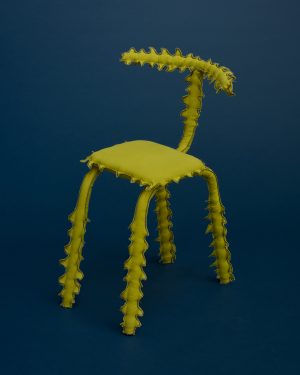 Disguise Series 00 – Chair 01 Olive Oil€1.188 incl. tax
Disguise Series 00 – Chair 01 Olive Oil€1.188 incl. tax -

 Erho Rug€1.350 incl. tax
Erho Rug€1.350 incl. tax -

 Bloossom Rug€3.438 incl. tax
Bloossom Rug€3.438 incl. tax -

 Murex Tapestry€3.250 incl. tax
Murex Tapestry€3.250 incl. tax -

 Quattro – Removable Textile / Steel Room Divider€8.450 incl. tax
Quattro – Removable Textile / Steel Room Divider€8.450 incl. tax -

 Made From Jordan – Geometric Indigo Rug€2.814 incl. tax
Made From Jordan – Geometric Indigo Rug€2.814 incl. tax -

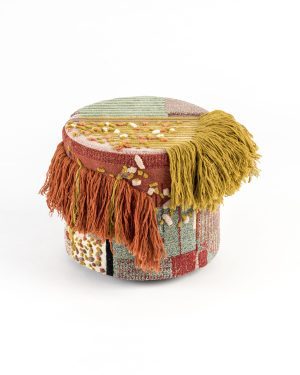 Hilde Pouf – Tibetan Wool / Wooden Base€3.256 incl. tax
Hilde Pouf – Tibetan Wool / Wooden Base€3.256 incl. tax -

 Teifi – Woven Wool Rug€1.350 incl. tax
Teifi – Woven Wool Rug€1.350 incl. tax -

 Nord – Wool Kilim€911 – €3.103 incl. tax
Nord – Wool Kilim€911 – €3.103 incl. tax -

 “Kau” Chair€13.250 incl. tax
“Kau” Chair€13.250 incl. tax

























































